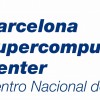Severo Ochoa Research Seminar: Reverse-Engineering the Brain
Title: "Reverse-Engineering the Brain from a Computer Architecture Perspective"
Date: 11th and 12th of December, at 11.00h.
Location: Sala d´Actes Manuel Martí Recober of FIB
Speaker: James E. Smith

This time we have a two days seminar with a tutorial format. Please notice that Registration is required.
Abstract
“The most powerful computing machine of all is the human brain. Is it possible to design and implement an architecture that mimics the way the human brain works?” -- Workshop report: Mary J. Irwin and John P. Shen, “Revitalizing computer architecture research,” Computing Research Association (2005).
Reverse-engineering the brain, so to speak, was identified as a grand challenge for computer architecture researchers over a decade ago, and there is no question that it is of immense consequence. Yet, computer architecture researchers have done remarkably little (virtually nothing) to address this challenge. One very significant reason is that experimental neuroscience has a long history and the neurobiological landscape is vast. Consequently, for someone outside the field, the mass of literature and diversity of theories is daunting, replete with controversy and contradiction. The learning curve is very steep and may appear insurmountable. It is difficult to even know where to start. The goal of this tutorial is to provide a starting point and significantly flatten the learning curve for researchers wishing to pursue the computer architecture grand challenge.
From the computer architecture perspective, the brain’s neocortex is a complex computing system that must be divided into a hierarchy of abstractions if it is ever to be understood. The way we use abstractions to model conventional computer systems serves as a guide for this “reverse-abstracting” process. At the bottom of the architecture stack, the first abstraction is from neuron biology to the lowest-level computing model. This is analogous to the abstraction from CMOS to binary logic. This first layer of abstraction is the foundation upon which everything else rests. Once away from the neurobiological domain, and in the computing model domain, higher levels of abstraction may be constructed in a well-defined manner.
In the past 20 years, theoretical neuroscientists have made significant progress in studying and architecting the lower levels of abstraction. This includes the initial biology-to-model abstraction, as well as the first abstraction layer: from single neurons to assemblies of neurons. This tutorial will bring attendees up-to-date with neuroscientific progress toward “reverse-engineering the brain”, as interpreted by a computer architect. After attending the tutorial, attendees will: 1) better understand the nature of the problem, 2) view it as a computer architecture research problem, 3) have a firm toe-hold for initiating study of the problem, and, it is hoped, 4) participate in a serious effort to tackle the grand challenge!
Day 1: 11/12/2017, 11.00h : biological background, time as a resource, neuron modeling
Day 2: 12/12/2017, 11.00h: temporal neural networks, neural architectures and case studies, simulators
The talk is free of charge but registration is required.
Further information: https://www.bsc.es/research-and-development/research-seminars/sors-rever....
© Facultat d'Informàtica de Barcelona - Universitat Politècnica de Catalunya - Website Disclaimer - Privacy Settings












